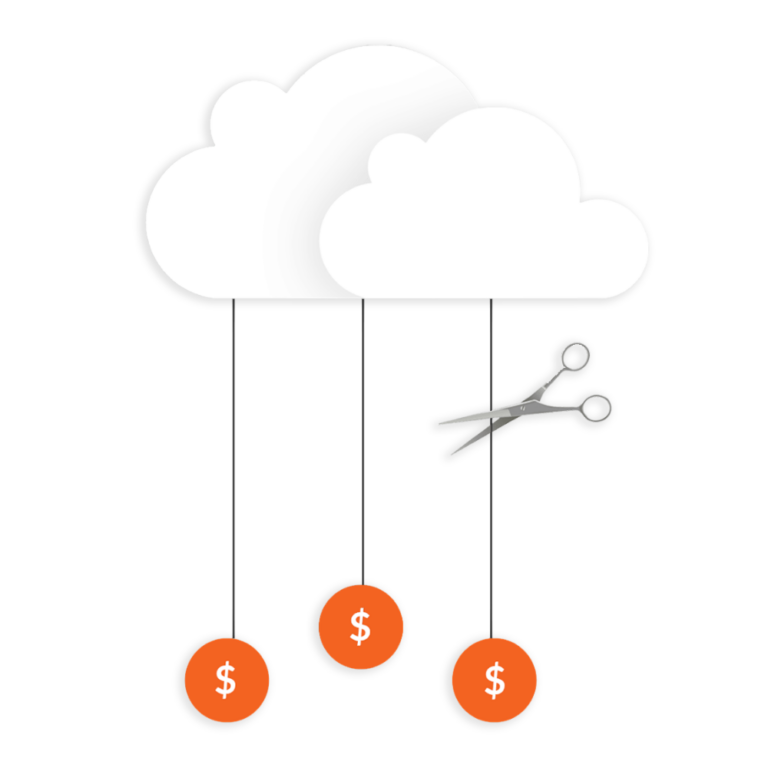
As cloud technology continues to evolve and transform the way we do business, it is becoming increasingly important for organizations to stay up-to-date with the latest cloud cost optimization strategies and tools to remain competitive in today’s fast-paced business environment.
As more and more organizations move to the cloud, cloud cost management for long-term sustainability and resilience is essential. Cloud tools and technology, such as Amazon Web Services (AWS) Cloud Services, offer a lot of benefits, but they can be expensive if not used properly.
In this blog post, we’ll explain why cloud cost optimization is important, share the top five key considerations for optimizing costs on the cloud, and how SourceFuse can support you in achieving this.
What is Cloud Cost Optimization, and Why Does it Matter?
Cloud cost optimization encompasses costs associated with cloud services, such as infrastructure, storage, and software. It involves identifying and implementing strategies to reduce costs while maintaining or improving performance, functionality, and security. This includes optimizing resource allocation, leveraging automation and monitoring tools, using reserved instances, and minimizing idle resources.
If done right, cloud cost optimization can support enterprises to realize many benefits, not least of all saving money. By reducing overall cloud spending, the resultant cost savings can be reinvested into other areas of the business. This might include investing in innovations that help businesses stay ahead of the competition.

Optimizing cloud costs can also improve financial planning by enabling better predictions for future expenses leading to more accurate budgeting. It also provides organizations with increased agility, i.e., the ability to automatically scale up or down as needed without incurring unnecessary costs.
And last, but by no means least, is the positive effect on ensuring compliance with industry-specific regulatory requirements by minimizing costs and waste associated with cloud services.
5 Key Considerations for Cloud Cost Optimization
- Right-sizing Resources
One of the most effective ways to optimize cloud costs is to right-size resources. This involves analyzing the resources currently being used and adjusting them to match the organization’s needs. This includes downsizing resources that are not being fully utilized and upgrading resources that are being overused. By right-sizing resources, organizations can reduce their cloud costs while maintaining or improving performance. - Utilizing Automation and Monitoring Tools
Another important strategy for optimizing cloud costs is to utilize automation and monitoring tools. Automation tools can help organizations automate routine tasks, such as resource allocation, backups, and software updates, reducing manual intervention and associated costs. Monitoring tools can help organizations identify underutilized resources and other areas where optimization is needed, allowing them to take action before costs escalate. - Using Reserved Instances
Reserved instances are another powerful tool for optimizing cloud costs. Reserved instances allow organizations to commit to a specific amount of usage for a set period of time, usually one or three years. By committing to a specific amount of usage, organizations can save money compared to on-demand instances, which are priced at a higher rate. This can result in significant cost savings over time. - Minimizing Idle Resources
Idle resources, such as unused instances or storage, can quickly add up and result in unnecessary costs. To optimize cloud costs, organizations should regularly review their resources and identify any idle resources that can be terminated or scaled down. By minimizing idle resources, organizations can reduce their overall cloud costs and avoid paying for services that are not being used. - Taking Advantage of Cost Optimization Programs
Finally, many cloud providers offer cost optimization programs that can help organizations to reduce their cloud costs. For example, AWS offers the Trusted Advisor program, which provides recommendations for optimizing cloud costs based on an organization’s usage patterns. Google Cloud offers the Cost Management program, which provides tools and resources for managing and optimizing cloud costs.
Optimizing Cloud Costs with SourceFuse
Using a combination of deep expertise on AWS Cloud Services for cost management, automation, and best practices, SourceFuse helps businesses maximize their return on investment in cloud technology. Our team of experts start with a 360 analysis of a customer’s existing cloud infrastructure to identify areas of improvement and provide customized cost optimization plans.
By leveraging their expertise and innovative solutions, SourceFuse ensures that customers’ cloud environments are optimized for cost-effectiveness without compromising on performance and security. This enables businesses to increase efficiency and profitability, reduce infrastructure costs, optimize resource utilization, and implement efficient cloud operations.
Summary
In summary, optimizing cloud costs is an essential part of managing cloud services effectively. By taking advantage of the skills and expertise of a cloud-native, bespoke solutions and services provider, organizations can reduce their cloud costs and improve their bottom line.
The better the optimization, the better the return-on-investment results!
Discover how SourceFuse can enable your organization to optimize your cloud costs.